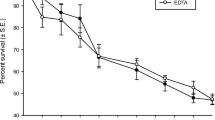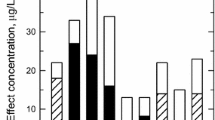Abstract
In vitro studies were done on Echinostoma caproni eggs with fully developed miracidia to determine the effects of snail-conditioned water (SCW) from Biomphalaria glabrata on miracidial hatching in the light. Observations were made on miracidial hatching at 4, 8, 12, 16, 20, and 24 h in multiwell chambers in the presence of SCW (experimentals) versus controls in artificial spring water (ASW). The number of hatched eggs was significantly greater (Student's t-test, P < 0.05) in SCW at all times as compared with those maintained in ASW. Significantly greater hatching was also obtained when snails were maintained in intact or perforated dialysis sacs in multiwell chambers as compared with sacs without snails. Agar plugs impregnated with SCW or the hydrophilic fraction of SCW that had been extracted in chloroform-methanol (2:1) did not influence significant hatching. However, the lipophilic fraction of the SCW extract caused significant hatching. Substances in SCW significantly increase hatching of E. caproni miracidia, but details on what these compounds are remain obscure.
Similar content being viewed by others
Author information
Authors and Affiliations
Additional information
Received: 14 May 1998 / Accepted: 21 July 1998
Rights and permissions
About this article
Cite this article
Fried, B., Reddy, A. Effects of snail-conditioned water from Biomphalaria glabrata on hatching of Echinostoma caproni miracidia. Parasitol Res 85, 155–157 (1999). https://doi.org/10.1007/s004360050526
Issue Date:
DOI: https://doi.org/10.1007/s004360050526




